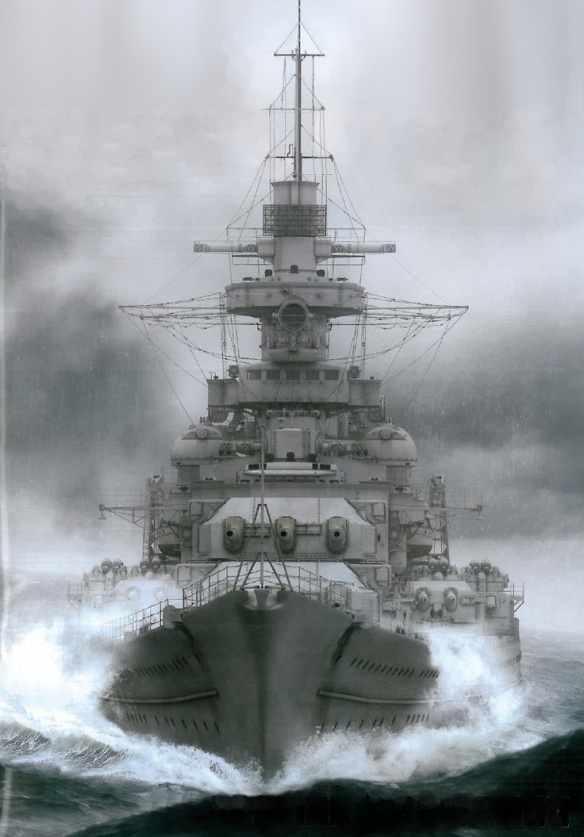
The final design was based on that of the Mackensen class (1917) which had been planned at the end of the First World War, and as completed the Scharnhorst class heralded the return of Germany as a respectable sea power – even though small in numbers. They were first-class ships and good all-rounders – adequately armed, well armoured, good seaboats and very fast for their size. Again, as with Deutschland, weight was saved by extensive use of electric welding and put into extra armour and high-pressure machinery. Note the elevation (45°) of the 11 in gun.
Classed as battlecruisers they had retained an 11 in armament, but protection was very much on a battleship scale (14in) and speeds of 31 knots were planned. Provision for another ship (Scharnhorst) was made during the same year, and they became the Scharnhorst class. As displacement restrictions were still in force, the released figure gave 26,000 tons, but in reality they were 31,800 tons normal and 38,000 tons deep.
The straight stem was to prove inadequate, and in a seaway both vessels shipped hundreds of tons of water over the forecastle. Shortly after trials, however. Gneisenau was fitted with a new bow (Scharnhorst received hers in 1939) which, although it proved to be better, still left them wet ships forward.
These warships were often criticized for being under-gunned, but the 11 in 54 calibre piece was a first-class weapon capable of piercing all but the thickest armour. By 1941, however, plans were afoot to convert them to 15 in gunned ships. After being damaged by bombs in February 1942, it was decided to fit Gneisenau with six 15 in guns while making good the damage. Photographs were taken by reconnaissance aircraft showing her without turrets and minus her bow (with a view to lengthening the ship).